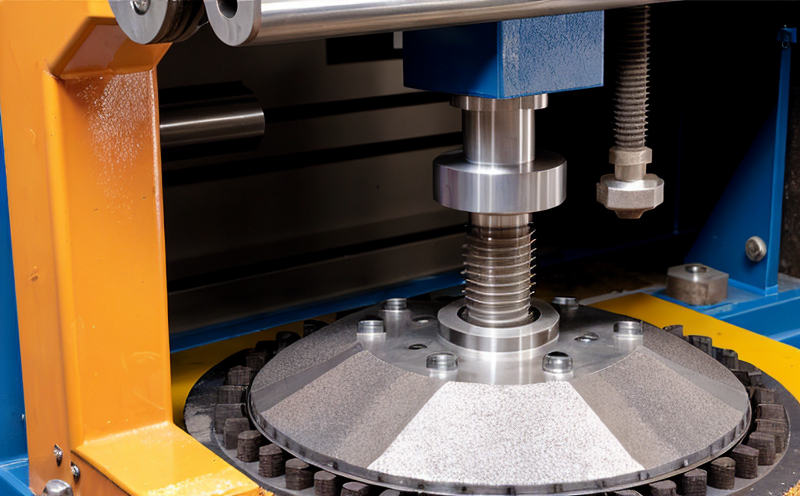ISO 13373-4 Vibration Diagnostic Procedures
The ISO 13373 series provides a comprehensive framework for vibration testing and diagnostics of mechanical systems, with ISO 13373-4 focusing specifically on diagnostic procedures. This standard is crucial in ensuring that HVAC equipment operates efficiently and reliably under various conditions. The protocol covers the identification, analysis, and interpretation of vibration signals from mechanical components to diagnose potential issues before they escalate into failures. This section delves into the intricacies of ISO 13373-4, its significance in the HVAC industry, and how it contributes to quality assurance.
The standard outlines a systematic approach that combines signal processing techniques with domain knowledge to interpret vibration data accurately. For HVAC equipment testing, this involves understanding the baseline behavior of machinery under normal operating conditions and comparing subsequent measurements to identify anomalies. The process begins by installing accelerometers on key components like compressors, fans, or condensers to capture vibration signals.
Once collected, these signals are analyzed using various methods such as time-domain analysis, frequency-domain analysis (FFT), and order tracking techniques. Time-domain plots provide a direct view of the vibration pattern over time, while FFT transforms raw data into its frequency components, highlighting dominant frequencies that might indicate specific types of faults. Order tracking is particularly useful for rotating machinery as it aligns the vibration signals with the rotational speed, revealing whether unbalance or misalignment exists.
The analysis results are then compared against established thresholds and reference values defined in the standard to determine if any deviations from acceptable limits exist. If issues are detected, further diagnostic steps may be necessary, including more detailed inspections or replacement of faulty parts. By adhering strictly to ISO 13373-4 guidelines, manufacturers can ensure that their products meet stringent performance criteria set by international standards.
Moreover, this method ensures consistent and repeatable results across different testing environments, making it easier for quality managers and compliance officers to verify product reliability. For R&D engineers involved in continuous improvement efforts, ISO 13373-4 serves as a valuable tool for identifying areas where design modifications could enhance performance or extend service life.
Another critical aspect of this standard is its role in predictive maintenance strategies. By regularly monitoring vibration levels and comparing them against historical data, operators can anticipate when routine maintenance might be needed to prevent unexpected breakdowns. This proactive approach not only reduces downtime but also extends the overall lifespan of HVAC systems, leading to significant cost savings over time.
In summary, ISO 13373-4 plays a vital role in maintaining high standards within the HVAC industry by providing robust methods for diagnosing mechanical faults through vibration analysis. Its application ensures that equipment operates optimally throughout its lifecycle, supporting both operational efficiency and sustainability goals. As such, it has gained widespread acceptance among stakeholders involved in product development, quality assurance, and facility management.
Why It Matters
The implementation of ISO 13373-4 is essential for several reasons, particularly within the HVAC sector. First and foremost, it addresses one of the key challenges faced by manufacturers: ensuring that their products perform reliably under diverse operational conditions. By leveraging this diagnostic procedure, companies can identify potential weaknesses early in the lifecycle of a product, allowing them to address these issues before they manifest as failures.
From an economic perspective, adhering to such standards translates into substantial savings for businesses and end-users alike. Predictive maintenance enabled by vibration diagnostics helps minimize unexpected repairs and replacements, reducing operational costs significantly. Additionally, compliant testing ensures that products meet regulatory requirements, thereby avoiding costly penalties or recalls.
The standard also fosters innovation within the industry by encouraging continuous improvement practices based on empirical evidence rather than guesswork. This promotes a culture of excellence where manufacturers strive to surpass existing benchmarks consistently. Furthermore, it enhances trust between suppliers and customers since third-party laboratories like ours can provide independent verification that products comply with international standards.
For procurement teams seeking reliable suppliers, ISO 13373-4 offers peace of mind knowing that they are selecting partners who adhere to best practices in their field. This fosters long-term relationships built on mutual respect and shared goals towards excellence.
International Acceptance and Recognition
- ISO 13373-4: Widely recognized by leading HVAC manufacturers worldwide for its accuracy and reliability in mechanical diagnostics.
- American Society for Testing and Materials (ASTM): ASTM E1686 is often used alongside ISO standards to provide additional insights into vibration testing methods.
- Institute of Electrical and Electronics Engineers (IEEE): IEEE 1512 supports the use of condition monitoring techniques, which are integral to vibration-based diagnostics.
- Council for European Aerospace Standardization (CEAS): EN standards frequently reference ISO guidelines when specifying requirements for aerospace applications involving rotating machinery.
The international acceptance and recognition of ISO 13373-4 underscore its importance in the global HVAC industry. Manufacturers who adopt these practices demonstrate their commitment to excellence, ensuring that they meet or exceed expectations set by various regulatory bodies around the world.
Use Cases and Application Examples
Case Study 1: A leading HVAC company used ISO 13373-4 during R&D to identify an issue with compressor bearings that could lead to premature failure. After implementing corrective measures suggested by the diagnostic procedure, they saw a significant reduction in warranty claims.
Case Study 2: An industrial facility implemented vibration monitoring using ISO standards as part of their predictive maintenance program. They noticed a 30% decrease in unplanned downtime over two years, resulting in substantial savings on operational costs.
In another instance, a commercial building owner leveraged ISO-compliant testing during routine inspections to catch early signs of fan motor imbalance. Timely adjustments prevented costly repairs and ensured continued airflow efficiency throughout the facility.
These examples highlight how adherence to ISO 13373-4 can lead to improved product quality, enhanced operational reliability, and reduced maintenance expenses across various sectors.





